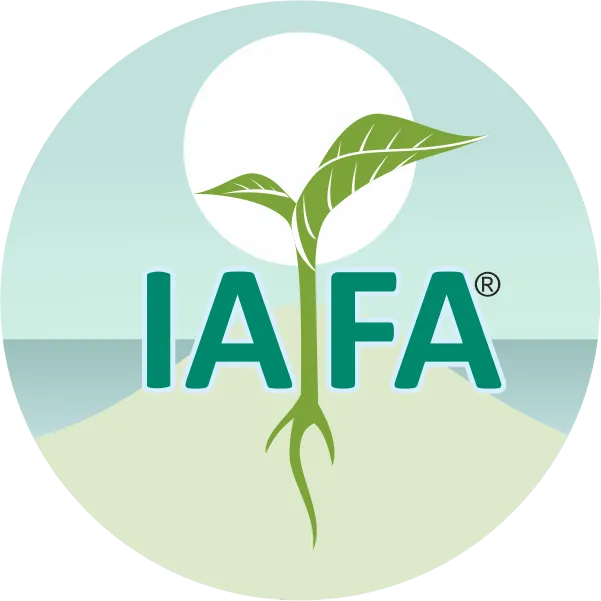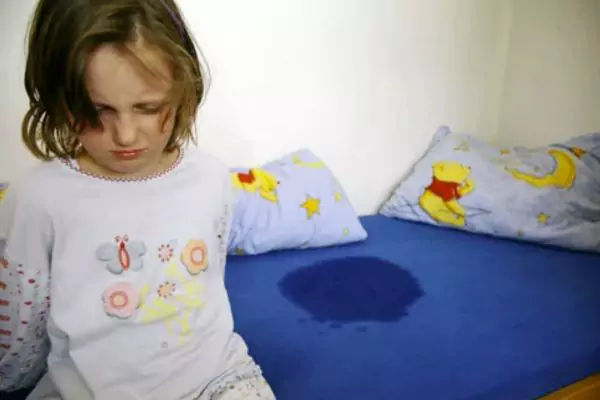On This Page
Introduction
How can we ensure a baby’s health and well-being naturally? What role does Ayurveda play in nurturing baby growth and immunity? How can Ayurvedic practices support modern baby care?
Ayurveda, the ancient science of life, provides a holistic and time-tested approach to baby care, known as Kaumarbhritya, which ensures the proper physical, mental, and emotional development of the child through various traditional practices, dietary guidelines, etc.
Essential aspects such as postnatal care for the mother (Sutika Paricharya), newborn rituals (Jatakarma Sanskara), oil massage (Abhyanga), and various herbal formulations help strengthen a baby’s immunity, digestion, and overall growth and development.
By integrating modern baby care with Ayurvedic principles, parents can provide a natural approach that provides babies with well growth and development in different phases of life.
Here, IAFA will give you the right advice for your baby’s care and the best routines to ensure their healthy growth and development.
Phases of Baby Growth and Development
Right after birth, babies go through several stages of growth, in which they achieve unique physical, emotional, and cognitive milestones. In Ayurveda and modern pediatrics, these phases are mentioned as follows:
Newborn (0 to 28 Days)
The phase where the baby adapts to live without the womb. This stage is considered as the most delicate phase of life.
Infant (1 Month to 12 Months)
In this phase, various milestones are achieved by the baby. Rapid growth like head control, rolling over, sitting, crawling, etc. The gradual transition from milk feed to solid feed (Anna Prashana) also occurs in this phase.
Toddler (1 to 3 Years)
This phase is marked by walking, speech development, and increased curiosity about different things.
Preschooler (3 to 5 Years)
A time of social and emotional development, learning, and independence.
Each phase of a baby’s growth requires a unique personalized approach to nutrition, hygiene, and emotional care to ensure a strong foundation for lifelong health. Ayurveda, with its time-tested methods like balanced nutrition, use of herbs, daily routines (Dincharya), and seasonal care (Ritucharya), etc. nurtures babies physically and mentally.
Dr. Sahil Gupta, an expert in Ayurveda, shares valuable insights into Ayurvedic baby care, guiding parents on how to support their child’s health naturally.
At IAFA, you will receive in-depth knowledge and personalized Ayurvedic guidance to help your baby thrive in every stage of development.
Ayurvedic Care of Newborns from Birth to Full Stability

In Ayurvedic classical literature in detail, various procedures for the stability of newborns are mentioned which are divided into:-
- Immediate care
- General Care
With a few differences in the opinion of different Acharyas regarding the sequence of procedures. The procedures mentioned are as follows:-
| Acharya Charaka | Acharya Sushruta | Acharya Vagbhatta |
| Neonatal Resuscitation(Pranapartayagamana) | Cleaning of the vernix caseosa (Ulva Parimarjana) | Cleaning of the vernix caseosa (Ulva Parimarjana) |
| Bath (Snana) | Cleaning of the oral cavity (Mukha Vishodana) | Neonatal Resuscitation(Pranapartayagamana) |
| Cleaning of the oral cavity (Mukha Vishodhna) | Tampon application (Pichudharna) | Cutting and caring for the umbilical cord (Nala Chedana) |
| Tampon application (Pichudharna) | Cutting and caring for the umbilical cord (Nala Chedana) | Bath (Snana) |
| Stomach wash (Garbhodaka Vamana) | Newborn ritual (Jatakarma) | Tampon application (Pichudharna) |
| Cutting and caring for the umbilical cord (Nala Chedana) | Bath (Snana) | Ayurvedic immunity booster (Suvaranaprashana) |
| Newborn ritual (Jatakarma) | Stomach wash (Garbhodaka Vamana) | |
| Protective measure (Raksha Karma) | Jata Karma |
From the above-mentioned procedures, immediate Care of the newborn includes Cleaning of Vernix caseosa (Ulva Parimarjana), Resuscitation of the baby (Prana Pratyagamana), Cutting of umbilical cord (Nala Chedana), and general care in personalized Ayurvedic guidance to help your baby thrive in every stage of development.
What is the Cleaning of Vernix Caseosa (Ulva Parimarjana)?
Ulva Parimarjan refers to the cleansing of the newborn (Navjata) immediately after birth. In this procedure, gently wiping off the vernix caseosa (Ulva), amniotic fluid, and other impurities from the newborn body is done using a soft (Mridu), clean (Swacha), and warm (Ushana) cloth.
To avoid harm to the newborn delicate skin, this procedure is typically performed using sterile and mild substances which reduce the risk of neonatal sepsis and skin infections like impetigo or candidiasis, etc.
What is Neonatal Resuscitation (Prana Pratyagamana)?
The process of stimulating the first breath of a newborn is known as Prana Pratyagamana. In some complicated conditions during delivery, the baby may not cry or breathe immediately in such situations, Ayurvedic classical texts suggest various gentle techniques to induce breathing, like striking stones near the base of the ears of the baby, sprinkling cold water in summer and hot water in winter, rubbing the baby’s back, applying mild stimulation to the sole, etc.
In severe cases, medical intervention may be required to ensure the baby takes its first breath and avoids asphyxiation. This step is crucial for initiating independent respiration and if not done correctly, delayed breathing can lead to brain damage, hypoxia, or even neonatal mortality.
What is Mouth Cleaning (Mukha Vishodhana)?
The cleansing of the mouth and oral cavity of the newborn is known as Mukha Vishodhana. To remove any residual amniotic fluid, or mucus that might be present in the baby’s mouth, this procedure is done as per Ayurveda.
As per texts, a clean cotton swab or soft cloth moistened with warm water or medicated ghee or Ghee with rock salt is used for this purpose. Ensuring oral hygiene from birth also reduces the risk of neonatal oral thrush caused by fungal infections and prepares the baby for its first feed by ensuring the oral cavity is clean and free from any obstruction.
What is Cutting and Caring for the Umbilical Cord (Naal Chedana)?
The process of cutting the umbilical cord after birth is known as Nala Chedana. According to Ayurveda, the umbilical cord should be tied at an appropriate distance from the baby’s abdomen using a sterile thread before being cut with a clean instrument.
To prevent infection proper preventive measures should be taken if there is the production of pus formation over the umbilical cord, oil prepared with a paste of Lodhra (Symplocos racemosa), Madhuka (Mon of the baby (Prana Pratyagamana), Cutting of umbilical cord (Nala Chedana), and general care including Bath (Snana), Feeding, Bed and Clothes, Protective measures (Raksha Karma), etc.

“Dr. Gupta’s IAFA provides genuine guidelines to follow the practices of Ayurveda in daily life from birth itself. IAFA is conducting several programs that ensure over all baby care. Follow Ayurveda through Institute of Applied Food Allergy® and succeed in assuring your child a natural friendly and healthy life”.
IAFA, a completely natural Ayurvedic child care solution !!!
– Dr. Sahil Gupta (B.A.M.S., M.H.A.)
Ayurvedic Allergy Specialist
CEO & Founder of IAFA®
At last, Best Baby Care Guidance

Trusted by
More than 90,000 Parents

Convenient
at-Home Management
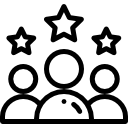
9.2 / 10
Customer Satisfaction Score
What is Delayed Cord Clamping (DCC)?
The practice of waiting for a specific duration before clamping and cutting the umbilical cord after birth is known as DCC. Instead of clamping the cord immediately (within 15-30 seconds), in DCC, clamping is usually done after 1-3 minutes or until the umbilical cord stops pulsating.
This ensures better oxygenation and increases blood volume in the newborn. The modern approach to DCC aligns with the Ayurvedic Siddhanta (Principles) as cord-cutting is done with proper timing to support the baby’s overall health.
What are the Benefits of Delayed Cord Clamping (DCC)?
- DCC allows the transfer of an extra 80-100 mL of blood from the placenta to the newborn which provides higher hemoglobin levels to the newborn and prevents anemia, especially in low-birthweight and preterm babies.
- Reducing the risk of iron deficiency as additional iron stores in the newborn which lasts for up to 6 months.
- It helps in enhancing cognitive function, and brain growth in the early months. As per recent studies, babies with DCC have better fine motor and social skills later in life.
- DCC helps in tissue repair, organ development, and immune system strengthening as it provides a rich supply of stem cells.
- Reduced Risk of Neonatal Complications like intraventricular hemorrhage (brain bleeding) and intestinal damage, etc.
- Due to better blood volume maintenance, DCC reduces the need for blood transfusions.
Are there Any Risks Related to Delayed Cord Clamping (DCC)?
Increased blood volume can lead to slightly higher bilirubin levels, but this is usually mild and manageable with phototherapy., Haridra (Curcuma longa), etc. should be applied.
Increased RBC also known as polycythemia causes increased blood viscosity, but this usually resolves without intervention.
What is the Expulsion of Swallowed Amniotic Fluid (Garbodhaka Vamana)?
The process of expelling any swallowed amniotic fluid from the newborn’s stomach. Some babies during birth may ingest amniotic fluid, which can cause discomfort or difficulty in digestion.
In such cases, Ayurveda suggests mild techniques to induce vomiting, such as placing a clean finger on the baby’s tongue (Jivha) or giving clarified butter (Ghrita) with rock salt (Saindhav Lavana), to help expel any unwanted fluid. This ensures the baby’s digestive system functions properly and prevents complications like aspiration pneumonia, TTN (transient tachypnea of the newborn), etc.
What is the First Bath of a Newborn Baby (Snana)?
An essential postnatal ritual in Ayurveda is Snana 9Bathing). It is usually performed a few hours after birth or on the next day, using lukewarm water infused with herbs of Ksheeri Vriksha like Aswatha (Ficus religiosa), Udumbara (Ficus racemosa), etc., Bala (Sida cordifolia) to promote immunity and skin health.
In Ayurvedic texts by Acharya Dalhana for different conditions different types of medicated baths are mentioned for newborns with less strength baby bath is taken with a decoction of Kapittha, In Vtaa dominance bath with Sarvagandh Udaka and for Pitta dominance bath with Ksheeri Vriksha is mentioned.
What is the Tampon application (Pichu Dharana)?
The father of surgery (Acharya Sushruta) has advised after oral cleansing (Mukha Vishodhan) the use of a tampon (Pichu) soaked in ghrita on Murdha (anterior fontanelle) and as per Acharya Vagbhata the covering of Talu Pradesh (Palate) with Sneha Pichhu is recommended.
Soft intracranial structures of the newborn also known as Murdha or Brahma Randhra, are unprotected at the time of birth due to unfused cranial sutures. Covering of anterior fontanelle with a tampon application they can be protected. It also facilitates the cure of some birth injuries like Brachial palsy, Erb’s palsy, etc.
What are Protective Measures for Newborns (Raksha Karma)?
Protective rituals and measures are performed to safeguard (Raksha) of the newborn from infections, evil spirits, and negative energies is known as Raksha Karma. To protect the newborn (Navjaata) from the influence of various evil powers (infections), in the newborn room (Kumaragara) herbs like Khadir, Pilu, and Parushka bark are hanged.
Fumigation (Dhupan) should be done with various herbs like Guggul, Agaru, Gaura Sarsapa, etc. In the hand and neck (Greeva) of the child small cloth pockets (Pottali) containing Hingu, Vacha, etc should be tied. Herbs like Tila, Atasi, and Sarshapa were scattered all around the newborn room.
This practice aligns with modern neonatal care, which emphasizes infection control and immune-boosting strategies like breastfeeding and proper hygiene.ersonalized Ayurvedic guidance to help your baby thrive in every stage of development.
What are Neonatal Rituals (Jaat Karma)?
This ritual marks the beginning of the child’s journey in the world and aims to ensure physical, mental, and spiritual health. In this, the baby is given to ingest (Praasham) a combination of honey (Madhu) and clarified butter (Ghrita) processed with Mantras and after that right breast (Dakshin Stanpaan) should be advanced to be suckled.
Water pot processed with Mantras (Abhimantrit Udaka Kumbha Sthaapanam) should be kept along the side of his head (Shira). According to Acharya Vagbhata, the first feeding with honey and clarified butter gives sufficient stimulation to the gastrointestinal intrinsic nerve plexus, to pass the mechanism at the earliest.
This Jaat Karma also includes guidelines for the mother’s postpartum care, skin-to-skin contact for promoting bonding, etc.
Newborn Care Tips – As Per Ayurveda
As we all know, Newborns (Shishu) require warmth, nourishment, and protection as they are very sensitive. Their digestive fire (Agni) is weak, and their immune system is still developing. So, Ayurveda recommends the following important tips to take care of in the case of the newborn.
Exclusive Breastfeeding (Stanya Sevanam)
- The best nutrition for a newborn is the mother’s milk as it is the most compatible (Satmya) and nourishing (Dhatu Poshaka) food for the baby.
- As per Ayurveda for newborn benefits, the mother should consume Shatavari (Asparagus racemosus), Yashtimadhu (Glycyrrhiza glabra), and Jeevanti (Leptadenia reticulata) to enhance milk quality and production.
- If after breastfeeding the baby suffers from colic or indigestion, the mother should avoid heavy (Guru), cold (Sheeta), and spicy (Katu) foods.
- If breast milk is not sufficient then as per Ayurveda few alternatives of breast milk can be used like Laghu- panchamula Siddha Ksheera with Sitopala in which combination of roots of 5 small herbs i.e. Brihati (Solanum indicum), Kantakari (Solanum virginianum), Gokshura (Tribulus terrestris), Shalaparni (Desmodium gangeticum), Prishniparni (Uraria picta) should be taken or Goat’s milk (Chhaga Peya) can be used. Cow milk (Go Dugadha) is also considered one of the best substitutes for breast milk. Sthirabhyama Siddham Kshira with Sitopala i.e. Shalaparni (Desmodium gangeticum), Prishniparni (Uraria picta) can also be used as a substitute. The administration of Vidanga (Embelia ribes) and Shunthi (Zingiber officinalis) Ksheerapaka to the neonatal in case of failed lactation is commonly accepted in Indian households.
Ayurvedic Baby Massage (Abhyanga)
To strengthen bones and muscles & an immunity booster daily gentle massage should be given to newborns with Tila Taila, Bala Taila, Lakshadi Taila, or Ksheerbala Taila, etc. Gentle massage supports brain development, enhances blood circulation and improves sleep patterns.
Colic, Gas, and Digestion Support (Ajirna & Shoola Chikitsa)
Newborns often suffer from colic (Shoola), indigestion (Apachan), and gas. So, Ayurveda recommends some gentle herbs for newborns like Hing (asafoetida) paste that is applied around the navel for bloating relief, Fennel (Saunf) or Musta water in very small amounts for better digestion, and gentle clockwise belly massage with warm oil like olive oil, coconut oil, etc. to aid digestion.
Ayurvedic Immunity Booster (Swarnaprashana)
Given on Pushya Nakshatra day, every month, or every day for 6 months. Swarnaprashana contains gold nano-articles, honey, and ghee infused with medicinal herbs like Brahmi (Centella asiatica), Vacha (Acorus calamus), and Saunf (fennel), etc. which helps brain development, act as an immune booster, and aids digestion.
Ayurvedic Baby Bath (Snana)
For hygienic and relaxation purposes a warm bath using Neem (Azadirachta indica) water, Pippala (Ficus religiosa), and Bilva (Aegle marmelos) leaves should be given to babies to keep their skin free from infections. Before and after baths Brahmi (Centella asiatica) infused oil on the scalp can be gently massaged which promotes better sleep.
Neonatal Eye Care – Protecting Your Baby’s Vision Naturally
Newborns produce a significant amount of mucin to keep their eyes moisturized. However, this often results in the accumulation of scabs due to prolonged sleep, which allows these secretions to dry on and around the eyes and eyelids. Therefore, maintaining proper eye hygiene is essential to prevent discomfort and potential infections.
Tips for Newborn Eye Care
- Never forcibly separate dry eyelids, always moisten them first before attempting to open them.
- Clean the eyes gently from the middle (inner) to the lateral (outer) side.
- Wash the eyes a couple of times a day to prevent excessive buildup.
- Breast milk can be used as natural eye drops to help keep the eyes clean and healthy.
Neonatal Ear Care
Newborns have very delicate ears that require gentle care to prevent infections and discomfort. Their ear canals produce natural wax which is also known as cerumen, which helps protect the ears from dust and bacteria. However, excessive wax buildup or improper cleaning can lead to blockages, irritation, and compromised hearing.
Tips for Baby Ear Care
- Avoid inserting anything into the ear canal i.e. Don’t use fingers, cotton swabs, or any objects to clean inside the ear, as this can push wax deeper and may cause injury.
- Using a soft, damp cloth only gently wipe around the outer ear and behind the ears.
- Earwax usually moves out on its own. Let it come out on its own but if there is excessive buildup of wax, then consult a doctor.
- After bathing to prevent moisture from building up, use a clean, dry cloth to gently pat the ears dry.
- If you notice discharge, swelling, foul odor, redness, etc. then seek medical advice.
Neonatal Skin Care – Soft as a Lotus
- To prevent skin dryness, limit baths to 2-3 times a week. Use lukewarm water and mild, fragrance-free baby soap or Ayurvedic herbs-infused water can be used.
- Moisturize with natural oils like coconut oil and almond oil to keep the skin hydrated.
- Avoid harsh products with strong chemicals, artificial chemicals, etc.
- Care for the umbilical cord stump should be done by keeping it clean and dry until it falls off naturally.
- To prevent rashes and irritation, use soft, breathable fabrics like cotton cloth.
Neonatal Dental care
Proper dental care from infancy helps in developing healthy teeth and gums. Even before the first tooth appears, keeping the baby’s mouth clean is essential to prevent bacterial buildup.
Tips for Dental Care in Newborns
This practice helps remove milk residue and prevents bacterial growth.s polycythemia causes increased blood viscosity, but this usually resolves without intervention.
Start caring for the baby’s gums with a soft, moistened cloth.
Wipe the gums twice a day, especially after feeding and before bedtime.
Infant Care Tips – As Per Ayurveda
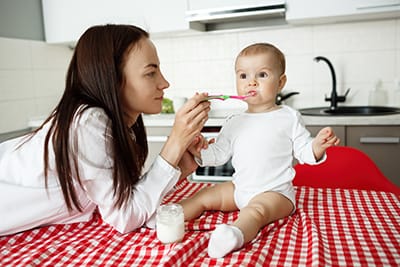
At six months, an infant’s digestive fire (Agni) becomes stronger, and this is the phase of gradual transition from exclusive milk feeding to solid food. As per Ayurvedic classical literature there are different views. Some scholars suggest first introducing fruits and then other solids (Kashyapa), whereas others suggest starting light (Laghu), digestible, and natural foods first.
Ideal First Foods (Phala Prashana and Annaprashana Sanskar)
- As per Kashayapa introduces fruit first (i.e. in the 6th month) so, mashed apples and bananas can be given to the infants, and in the 10th month cereals are introduced (Anna Prashana). But some Acharya suggest introducing both in the 6th month.
- One can also start with light pulses like moong dal soup, rice water (Peya), etc.
- Slowly introduce clarified butter (ghee), mashed vegetables (pumpkin, carrot), and thin porridge (khichdi) to strengthen digestion.
- Don’t introduce salt or sugar for up to 2 years (Minimum for 1 year), as natural sweetness and saltiness are enough for infants.
- If sugar and salt are to be introduced use rock salt (Saindhava Lavana) and jaggery (Sharkara).
- Digestive spices like cumin (Jeera), and cinnamomum in small amounts can be added to improve digestion.
Ayurvedic Herbs for Better Digestion & Colic Relief
For colic relief carom seed (Ajwain) water can be given occasionally. Musta, Saunf, Pippali, and Bilva help in preventing bloating and regulating better digestion.
Teething Care (Dantodbhava Paricharya)
For pain relief rub Vacha (Acorus calamus) powder or honey on the gums. A licorice (Yashtimadhu) stick or a clean Neem (Azadirachta indica) twig can be given to the baby for chewing.
Sleep (Nidra)& Relaxation for Infants
For calming the nervous system and to promote restful sleep, Brahmi Taila scalp massage can be given to infants. Playing Mantras soft Indian classical music or lullabies during bedtime creates a soothing atmosphere for the infant to sleep.
Ayurvedic Immunity Boosters for Infants
Swarnaprashana continues to support brain health and immunity. Along with this as per need Tulsi (Ocimum sanctum), and Guduchi (Tinospora cordifolia) in very small amounts can be given to help fight against infections.
When the child is between 6 and 8 months old, ear piercing is done, As per the father of surgery Acharya Sushruta, the piercing of the child’s ear is done for two purposes disease Protection (Rakshanimit) and ornamentation (Abhushanartha).
According to Karna Vedhana Sanskara, inducing injury to the earlobe’s immune system seems to enhance the strengthening of the immune system which initiates antigen-antibody reactions during early life, leading to secondary immunization against various infections.
Toddler Care Tips – As Per Ayurveda
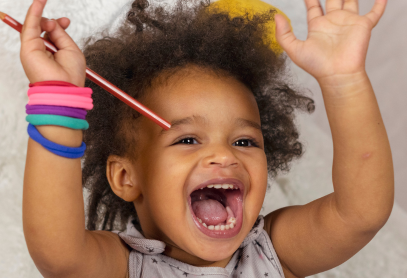
The nutritional and immunity needs of toddlers increase as they become more active. Therefore, Ayurveda suggests nutritious food, daily massage, and Ayurvedic herbs support for overall well-being.
Ayurvedic Diet for Toddlers
Include clarified butter (ghee), Sharkara (jaggery), dry fruits like soaked almonds, dates, figs, rice, wheat, and various pulses that can be added to the diet. Seasonal fruits like pomegranates, bananas, oranges, chikoos, and apples must be added to the daily diet for immunity. Digestive spices like fennel, ginger, cumin, ajwain, etc. can be introduced in small amounts.
Ayurvedic Brain & Memory Boosters
Walnuts, almonds, and clarified butter (Ghrita) must be given to children to support brain development. For improving memory, learning ability, concentration, etc. herbs like Mandukaparni, Shakhpushpi, etc can be given. To enhance cognitive abilities under expert guidance, Sarswatarishta, Shankhpushpi tonic, or Brahmi Ghrita can be given.
Dental Care for Toddlers
- Until the baby is 18 months old, use only water with a toothbrush—no toothpaste is needed.
- Replace the toothbrush every three to four months or sooner if the bristles wear out.
- Keep an eye on early signs of tooth decay, such as white or brown spots and pits on the teeth.
- Dashana Sanskara Churna is highly beneficial for strengthening baby teeth and maintaining oral hygiene.
Daily Oil Massage (Abhyanga) for Toddlers
Bala Taila or Ksheerbala Taila massage keeps the toddler active, promotes flexibility, enhances immunity, improves circulation, and supports growth.
Skin Care for Infants and Toddlers
- Daily gentle cleansing with lukewarm water and herbal soap is recommended for the baby to help maintain hygiene.
- To prevent dry skin, apply natural moisturizer regularly, especially after baths.
- Baby-friendly sunscreen or covering the skin with lightweight clothing can be done to prevent the baby from sun damage.
- To prevent diaper rash, change diapers frequently and use a barrier cream or oil consisting of coconut oil, zinc oxide, etc.
- Check for skin conditions like cradle cap, or allergic reactions and seek medical advice if needed.
Outdoor Play & Sunlight Exposure
Vitamin D is essential for the body. So, playing outside ensures Vitamin D synthesis, stronger bones, and better immunity in toddlers. Encouraging simple stretches and yoga posture to the toddlers to boost physical development.
Ayurvedic Immunity Boosters for Toddlers
Swarnaprashana should be given to toddlers to keep infections away. Along with this Chyawanprash in small doses should be given to enhance strength and immunity. Herbal drinks made from Turmeric, Tulsi, Guduchi, fennel, etc. can also be introduced in small quantities to prevent seasonal illnesses.
Socializing and Ideal Parenting (Aachara Rasayana)
In children’s early development socialization plays a crucial role. Each day a child goes through changes, gradually starting to learn and understand their thoughts and emotions. They start distinguishing between happiness and sadness, and along with this acquire skills to cope with stress, and resolve conflicts.
The family plays a huge role in a child’s socialization. The family’s shared behaviors, and beliefs significantly shape a child’s early experiences, and the Ayurveda code of conduct helps in this in the best way. In Ayurvedic classical texts, codes of conduct known as Achara Rasayan are mentioned which prevents the imbalance of Doshas (both physical and mental Dosha), which is considered the root cause of illness.
There is not a single correct approach to good parenting, but guiding the child along the right path is a defining aspect of ideal parenting and Achara Rasayana helps in this.
Frequently Asked Questions
Question: Can Ayurvedic Oils be Used for Massaging Babies?
Answer: Yes, Ayurvedic oils like Bala Taila, Ksheerbala Taila, Lakshadi Taila, Tila Taila, Narikela Taila, etc. are excellent for baby massage. These oils not only nourish the skin, and strengthen the muscles, but also promote growth, and improve sleep when massaged gently.
Question: What are the Top Ayurvedic Herbs for Infant Health?
Answer: Various herbs can be used in infants as per the individual requirements few are Shatavari (Asparagus racemosa) which enhances immunity and digestion, Ashwagandha (Withania somnifera) which supports strength and growth, Bala (Sida cordifolia) which strengthens muscles and bones, Guduchi (Tinospora cordifolia) which boosts immunity and protects against infections, Vacha (Acorus calamus) which supports respiratory health, speech improvement and brain development, etc.
Question: How Does Ayurveda Support Digestive Health in Babies?
Answer: Ayurveda recommends Saunf (fennel) and Ajwain (carom seed) water for colic relief. Musta helps to prevent gas and indigestion and in case of bloating gentle tummy massage with Hing (asafoetida) paste.
Question: What are the Ayurvedic Recommendations for Baby Sleep and Comfort?
Answer: For baby sleep, comfort, and relaxation gentle massage with Ksheerbala Taila is given before bedtime. Massage Brahmi (Centella asiatica) infused oil on the scalp to calm the mind. After this Lukewarm water baths with herbs like Bilva (Aegle marmelos) and Vacha (Acorus calamus) will be given to improve sleep quality. The most important tip is a consistent sleep routine with a peaceful environment.
Question: How Can Ayurveda Boost Immunity in Newborns and Infants?
Answer: Regular breastfeeding is considered best for immunity boosting. Along with this, there are various ways by which immunity is boosted in newborns and infants. The most famous is Swarnaprashana (gold-infused herbs), which not only improves immunity but is best for brain development. Tulsi (Holy basil), Guduchi (Tinospora cordifolia) decoction, and Chyawanprash in small amounts can also be given to enhance resistance to infection.
References
- Sharma, Sujata & Dangwal, Avdesh & Pandey, Reena. (2019). Navjata Shishu Paricharya (Neonatal Care) In Ayurveda: A Review. Journal of Ayurvedic and Herbal Medicine. 5. 106- 109. 10. 31254/ jahm. 2019. 5307.
- Bhinde, Sagar. (2022). Art and science of baby care -An Ayurveda perspective.
- Bhaskar, Chuman Lal & Miral, Dobariya & Chaudhary, Sonam & Patel, Ks & Kori, Virendra. (2019). A CRITICAL REVIEW OF CLASSICAL NAVAJATA SHISHU PARICHARYA W.S.R. TO BASIC NEWBORN RESUSCITATION.
- Deodas, Madhavi & Mukadam, Pooja & Singh, Sudha & chutake, Sumit. (2024). A REVIEW ARTICLE ON NAVAJATA BALAKA PARICHARYA WITH MODERN ASPECTS. International Ayurvedic Medical Journal. 12. 1959- 1964. 10. 46607/ iamj- 0512- 112024.
- Rathore S, Kumar Vk C, R S. A critical review on neonatal hyperbilirubinemia-an Ayurvedic perspective. J Ayurveda Integr Med. 2020 Apr- Jun; 11 (2): 190- 196. Doi: 10. 1016/ j. jaim. 2018. 08. 006. Epub 2019 Oct 15. PMID: 31628007; PMCID: PMC- 7329719.
- Bhinde SM, Patel KS, Kori VK, Rajagopalan S. Management of spastic cerebral palsy through multiple Ayurveda treatment modalities. Ayu. 2014 Oct-Dec; 35 (4): 462- 6. doi: 10. 4103/ 0974- 8520. 159044. PMID: 2619- 5914; PMCID: PMC- 4492036.
- Bhinde, Sagar. (2022). Art and science of baby care -An Ayurveda perspective.
- Chaturvedi S, Randive B, Pathak A, Agarkhedkar S, Tillu G, Darmstadt GL, Patwardhan B. Prevalence and perceptions of infant massage in India: a study from Maharashtra and Madhya Pradesh states. BMC Pediatr. 2020 Nov 9; 20 (1): 512. Doi: 10. 1186/ s12887- 020- 02416- y. PMID: 33167905; PMCID: PMC- 7650175.
- Bajpai S. Role of Ayurveda in promoting maternal and child health. Anc Sci Life. 2008 Jul; 28 (1):16- 20. PMID: 22557292; PMCID: PMC- 3336342.
- Deodas, Madhavi & Mukadam, Pooja & Singh, Sudha & chutake, Sumit. (2024). A REVIEW ARTICLE ON NAVAJATA BALAKA PARICHARYA WITH MODERN ASPECTS. International Ayurvedic Medical Journal. 12. 1959- 1964. 10. 46607/ iamj- 0512- 112024.
- Chaudhary, Nareshkumar & Patir, Nikita & Patel, Anand & Kori, V. (2023). Newborn care with Ayurveda – A Review. Volume 5. January- February 2023.
Seeking Expert Advice
For expert guidance in newborn, infant, and toddler care, digestive issues, immunity building, and Ayurvedic remedies, please book your appointment now to consult Dr. Sahil Gupta at IAFA for personalized Ayurvedic solutions tailored to your child’s health needs.
Was this Page Helpful?
Get More Guidance About Baby Care with Our Health Experts, You Are Just 3 Steps Away!

01. Connect With Us
Book an appointment to share queries of your child health.

02. Consult With Us
Consult with Ayurvedic Pediatrician of IAFA®.

03. Root Cause Treatment
Get an accurate diagnosis and treatment for your child.
Real Case Studies – Successfully Treated Patients
Real Case Studies of Successfully Treated Patients from All Around the World by IAFA Ayurveda®

9 Year Old Female Patient Recovered from Chronic Allergic Bronchitis – A Case Study
This case study presents a 9-year-old female patient who has successfully recovered…

12-Year-Old Child Recovered from Sun Allergy and Polymorphous Light Eruption (PMLE) – A Case Study
This is a case study of a 12-year-old child who has successfully…

40-Year-Old Female Patient Recovered from Dyshidrotic Eczema and Onychomycosis – A Case Study
This case study highlights the successful recovery of a 40-year-old female patient…

40-Year-Old Female Patient Recovered from Urticaria and Angioedema – A Case Study
This case study focuses on a 40-year-old female patient who has successfully…
Read More Articles

Bed Wetting (Shayyamutra)
Bedwetting is an embarrassing habit in some children where they are unable…

Attention Deficit Hyperactivity Disorder – ADHD (Vatika Unmada)
Contact IAFA Ayurveda® to get safe and natural remedies for the treatment…




